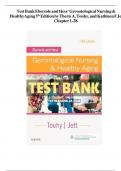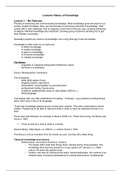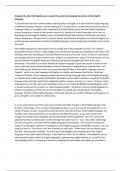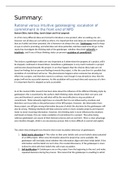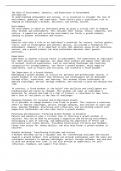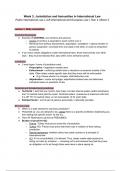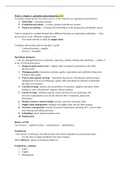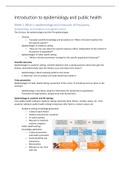il il il il il il il
il HealthyAging 5th Edition by Theris A. Touhy, and Kathleen F Je
il il
il
il il il il il il il il
Chapter 1-28. il il
,Chapter 01: Introduction to Healthy Aging
il il il il il
Touhy & Jett: Ebersole and Hess’ Gerontological Nursing & Healthy Aging, 5thEdition
il il il il il il il il il il il il
MULTIPLE CHOICE il
1. A man is terminally ill with end-stage prostate cancer. Which is the best statement about
il il il il il il il il il il il il il il
thisman‘s wellness?
il il il
a. Wellness can only be achieved with aggressive medical interventions. il il il il il il il il
b. Wellness is not a real option for this client because he is terminally ill. il il il il il il il il il il il il il
c. Wellness is defined as the absence of disease. il il il il il il il
d. Nursing interventions can help empower a client to achieve a higher level il il il il il il il il il il il
ofwellness. il il
ANS: D il
Nursing interventions can help empower a client to achieve a higher level of wellness; a nursecan
il il il il il il il il il il il il il il il il
foster wellness in his or her clients. Wellness is defined by the individual and is
il il il il il il il il il il il il il il il
multidimensional. It is not just the absence of disease. A wellness perspective is based on the
il il il il il il il il il il il il il il il il
belief that every person has an optimal level of health independent of his or her situation or
il il il il il il il il il il il il il il il il il
functional level. Even in the presence of chronic illness or while dying, a movement toward
il il il il il il il il il il il il il il il
wellness is possible if emphasis of care is placed on the promotion of well-being in a
il il il il il il il il il il il il il il il il
supportive environment.
il il
PTS: 1 DIF: Apply REF: p. 7
il il i l il il il il TOP: Nursing Process: il il
DiagnosisMSC: Health Promotion and Maintenance
il il il il il il
2. In differentiating between healU
il th aS NellnTess in hOealth care, which of the following
nd w il il
N R I G B.C M il il il il il
statements is true?
il il il
a. Health is a broad term encompassing attitudes and behaviors. il il il il il il il il
b. The concept of illness prevention was never considered by previous generations.
il il il il il il il il il il
c. Wellness and self-actualization develop through learning and growth. il il il il il il il
d. Wellness is impossible when one‘s health is compromised. il il il il il il il
ANS: A il
Health is a broad term that encompasses attitudes and behaviors; holistically, health includes
il il il il il il il il il il il il
wellness, which involves one‘s whole being. The concept of illness prevention was never
il il il il il il il il il il il il il
considered by previous generations; throughout history, basic self-care requirements have
il il il il il il il il il il
been recognized. Wellness and self-actualization develop through learning and growth—as
il il il il il il il il il il
basic needs are met, higher level needs can be satisfied in turn, with ever-deepening richness to
il il il il il il il il il il il il il il il il
life. Wellness is possible when one‘s health is compromised—even with chronic illness, with
il il il il il il il il il il il il il
multiple disabilities, or in dying, movement toward a higher level of wellness is possible.
il il il il il il il il il il il il il il
PTS: 1 DIF: Understand REF: p. 7
il il i l il il il il TOP: Nursing Process: il il
EvaluationMSC: Health Promotion and Maintenance
il il il il il il
3. Which racial or ethnic group has the highest life expectancy in the United States?
il il il il il il il il il il il il il
a. Native Americans il
b. African Americans il
c. Hispanic Americans il
d. Asian and Pacific Island Americans il il il il
NURSINGTB.COM
, Ebersole and Hess' Gerontological Nursing and Healthy Aging 5th Edition Touhy Test Bank
il il il il il il il il il il il il
Chapter 02: Cross-Cultural Caring and Aging
il il il il il
Touhy & Jett: Ebersole and Hess’ Gerontological Nursing & Healthy Aging, 5thEdition
il il il il il il il il il il il il
MULTIPLE CHOICE il
1. Which of the following is a true statement about differing health belief systems?
il il il il il il il il il il il il
a. Personalistic or magicoreligious beliefs have been superseded in Western minds il il il il il il il il il
bybiomedical principles.
il il il
b. In most cultures, older adults are likely to treat themselves using
il il il il il il il il il il
traditionalmethods before turning to biomedical professionals.
il il il il il il il
c. Ayurvedic medicine is another name for traditional Chinese medicine. il il il il il il il il
d. The belief that health depends on maintaining a balance among opposite qualitiesis
il il il il il il il il il il il il
characteristic of a magicoreligious belief system.
il il il il il il
ANS: B il
Older adults in most cultures usually have had experience with traditional methods that
il il il il il il il il il il il il
haveworked as well as expected. After these treatments fail, older adults turn to the formal
il il il il il il il il il il il il il il il il
healthcare system. Even in the United States, it is common for older adults to pray for cures or
il il il il il il il il il il il il il il il il il il il
wonder what they did to incur an illness as punishment. The Ayurvedic system is a naturalistic
il il il il il il il il il il il il il il il il
health belief system practiced in India and in some neighboring countries. This belief is
il il il il il il il il il il il il il il
characteristic of a holistic or naturalistic approach.
il il il il il il il
PTS: 1 DIF: Understand
il il i l REF: p. 16-17 i l il
TOP: Nursing Process: Assessment i l il il MSC: Health Promotion and Maintenance il il il il
2. Which of the following consideUratiS
onsNis m
Tost likO
ely to be true when working with an
il il il il
N R I G B.C M il il il il il il il
interpreter?
il
a. An interpreter is never needed if the nurse speaks the same language as the patient.
il il il il il il il il il il il il il il
b. When working with interpreters, the nurse can use technical terms or metaphors. il il il il il il il il il il il
c. A patient‘s young granddaughter who speaks fluent English would make the
il il il il il il il il il il
bestinterpreter because she is familiar with and loves the patient.
il il il il il il il il il il il
d. The nurse should face the patient rather than the interpreter.il il il il il il il il il
ANS: D il
The nurse should face the patient rather than the interpreter is a true statement; the intent is
il il il il il il il il il il il il il il il il
toconverse with the patient, not with a third party about the patient. Many reasons may prevent
il il il il il il il il il il il il il il il il il
the patient from speaking directly to a nurse. Technical terms and metaphors may be
il il il il il il il il il il il il il il
difficult or impossible to translate. Cultural restrictions may prevent some topics from being
il il il il il il il il il il il il il
spoken ofto a grandparent or child.
il il il il il il il
PTS: 1 DIF: Understand REF: p. 18-19
il il i l il il i l il il il i l il il il il
TOP: Nursing Process: Implementation MSC: Safe, Effective Care Environment
i l il il il il il i l i l il il il
3. An older adult who is a traditional Chinese man has a blood pressure of 80/54 mm Hg and
il il il il il il il il il il il il il il il il il
refuses to remain in the bed. Which intervention should the nurse use to promote and
il il il il il il il il il il il il il il il
maintainhis health?
il il il
a. Have the health care provider speak to him. il il il il il il il
b. Use principles of the holistic health system. il il il il il il
c. Ask about his perceptions and treatment ideas. il il il il il il
NURSINGTB.COM
, Ebersole and Hess' Gerontological Nursing and Healthy Aging 5th Edition Touhy Test Bank
il il il il il il il il il il il il
d. Consult with a practitioner of Chinese medicine. il il il il il il
ANS: C il
Using the LEARN model (listen with sympathy to the patient‘s perception of the problem,
il il il il il il il il il il il il il
explain your perception of the problem, acknowledge the differences and similarities,
il il il il il il il il il il il
recommend treatment, and negotiate agreement), the nurse gathers information from the
il il il il il il il il il il il
patient about cultural beliefs concerning health care and avoids stereotyping the patient. In
il il il il il il il il il il il il il
theassessment, the nurse determines what the patient believes about caregiving, decision
il il il il il il il il il il il il
making,treatment, and other pertinent health-related information. Speaking with the health
il il il il il il il il il il il
care provider is premature until the assessment is complete. Unless he accepts the beliefs,
il il il il il il il il il il il il il il
principles of the holistic health system can be potentially unsuitable and insulting for this
il il il il il il il il il il il il il il
patient. Unless he accepts the treatments, consulting with a practitioner of Chinese medicine
il il il il il il il il il il il il il
can also be unsuitable and insulting for this patient.
il il il il il il il il il
PTS: 1 DIF: Apply il il i lREF: p. 18 i l il
TOP: Nursing Process: Implementation MSC: Health Promotion and Maintenance
i l il il il il il il
4. Which action should the nurse take when addressing older adults?
il il il il il il il il il
a. Speak in an exaggerated pitch. il il il il
b. Use a lower quality of speech. il il il il il
c. Use endearing terms such as ―honey.‖ il il il il il
d. Speak clearly. il
ANS: D il
Some health professionals demonstrate ageism, in part because providers tend to see manyfrail,
il il il il il il il il il il il il il
older persons and fewer of those who are healthy and active. Providers should not assume that
il il il il il il il il il il il il il il il il
all older adults are hearing or mentally impaired. The most appropriate action
il il il il il il il il il il il il
when addressing an older aduNltUwRoSulI
il dNbeGtT
oBsp.
eaCkOcM
learly. Examples of unintentional ageism in il il il il il il il il il
language are an exaggerated pitch, a demeaning emotional tone, and a lower quality of
il il il il il il il il il il il il il il
speech.
PTS: 1 DIF: Apply il il i l REF: p. 15 i l il
TOP: Nursing Process: Assessment i l il il MSC: Health Promotion and Maintenance il il il il
5. The nurse prepares an older woman, who is Polish, for discharge through an interpreter
il il il il il il il il il il il il il
andnotes that she becomes tense during the instructions about elimination. Which
il il il il il il il il il il il il
interventionshould the nurse implement?
il il il il il
a. Move on to the discussion about medication. il il il il il il
b. Ask the older woman how she feels about this topic. il il il il il il il il il
c. Instruct the interpreter to repeat the instructions. il il il il il il
d. Have the older woman repeat the instructions for clarity. il il il il il il il il
ANS: B il
When working with an interpreter, the nurse closely watches the older adult for nonverbal
il il il il il il il il il il il il il
communication and emotion regarding a specific topic and therefore validates the assessment
il il il il il il il il il il il il
about the older adult‘s tension before proceeding. Because the nurse notices her tension, the
il il il il il il il il il il il il il il
nurse temporarily suspends the preparation to validate her assessment. If the nurse proceeds
il il il il il il il il il il il il il
and the older adult is uncomfortable discussing elimination, then important instructions can
il il il il il il il il il il il il
bemissed, leading to adverse effects for the older adult. Repeating the instructions can
il il il il il il il il il il il il il il
aggravatethe older adult‘s discomfort. Instructing the older adult to repeat the nurse‘s
il il il il il il il il il il il il il
instruction ignores her needs.
il il il il
NURSINGTB.COM

